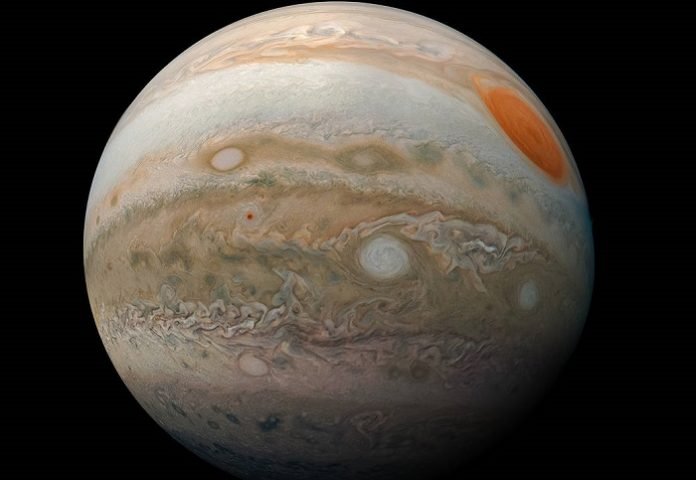
In a new study, scientists found more information about Jupiter’s journey through the solar system 4.5 billion years ago.
They used advanced computer simulations and found Jupiter was formed four times further from the sun than its current position would indicate.
The research was conducted by researchers from Lund University and other institutions.
Previous research has shown that gas giants around other stars are often very near their sun. They formed far away but then migrated to an orbit closer to the star.
Scientists found that Jupiter was quite recently formed, as were the other planets in the solar system.
There are two groups of asteroids that reside at the same distance from the Sun as Jupiter. They orbit in front of and behind Jupiter.
However, there are about 50% more asteroids in front of Jupiter than behind it. It is unknown why the two asteroid groups do not contain the same number of asteroids.
To solve the problem, in the study, the team conducted extensive computer simulations to recreate the course of Jupiter’s formation and see how this planet gradually drew in its asteroids.
They found this asteroid asymmetry could only have occurred if Jupiter was formed four times further out in the solar system and then migrated to its current position.
According to the result, Jupiter’s gravity drew in more asteroids in front of it than behind it during its journey towards the sun.
The computer models showed that the journey inwards in the solar system followed a spiraling course.
In this process, Jupiter continued to circle around the sun, albeit in an increasingly tight path.
The asteroids were drawn in when Jupiter was a young planet with no gas atmosphere. They maybe consist of building blocks similar to those that formed Jupiter’s core.
The researchers suggest that their study is the first to prove that Jupiter was formed a long way from the sun and then moved to its current orbit.
In the near future, NASA’s space probe Lucy will do more research on Jupiter’s Trojan asteroids.
The lead author of the study is Simona Pirani, a doctoral student in astronomy at Lund University.
The study was published in Astronomy & Astrophysics.
Copyright © 2019 Knowridge Science Report. All rights reserved.



